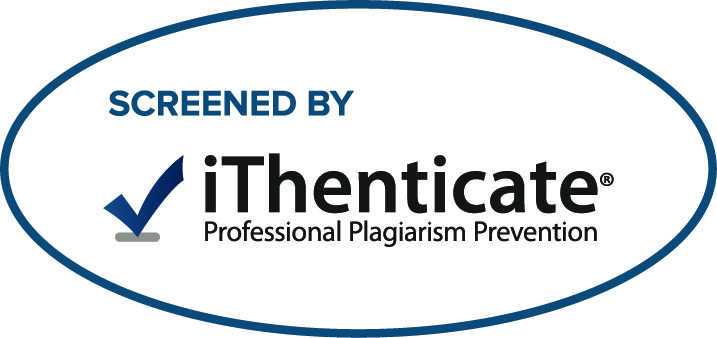Abstract
Introduction. Cardiac tamponade caused by blunt thoracic injuries is a rare case with a high mortality rate. Generally, patients with blunt cardiac injury were not survived before they reach the hospital. We present the case of a 50-year-old man was admitted to our emergency department after a motorcycle hit the cart he was pushing on the street, and then the handle hit the chest. He presented with hemodynamically unstable and a bruised on precordial area, then he went into cardiac arrest. Standard CPR was done for 2 minutes, continued with intubation and ROSC. FAST showed fluid in the pericardial sac. After doing pericardiocentesis, an amount of blood about +/- 40 mL was aspirated. A median sternotomy was performed, and lacerations were found in the right ventricle and right ventricle pulmonary junction.
Method. Literature searching was done in Proquest, PubMed and ScienceDirect database. The research papers were selected based on exclusion and inclusion criteria and were critically appraised using the tools from PRISMA.
Result. Two articles were found to be relevant to the topic. Experimental research was not found; there were only two case-report articles. A median sternotomy was a preferable surgical approach in blunt chest trauma with the presentation of cardiac tamponade with hemodynamically unstable.
Conclusion. Prompt diagnosis and definitive operation can be lifesaving in traumatic acute cardiac tamponade caused by blunt chest trauma based on the level of evidence 4. The FAST examination was beneficial in diagnosing cardiac tamponade and pericardiocentesis can be a temporary measure. A median sternotomy was a safe surgical approach in controlling the cardiac injury. The patient was discharged on the fifth post-operation day.
Bahasa Abstract
References
1. Schellenberg M, Inaba K. Critical Decisions in the Management of Thoracic Trauma. Emerg Med Clin North Am. 2018; 36: 135–47.
2. Tintinalli JE. Tintinalli’s Emergency Medicine: A Comprehensive Study Guide.8th ed. New York: Mcgraw-hill. 2011; 1753-61.
3. Berg R, Talving P, Inaba K. Cardiac rupture following blunt trauma. J Trauma. 2011;13(1):35–45.
4. Marcolini EG, Keegan J. Blunt Cardiac Injury. Emerg Med Clin North Am. 2015;33(3):519-27.
5. Yun JH, Byun JH, Kim SH, Moon SH, Park HO, Hwang SW, et al. Blunt traumatic cardiac rupture: Single-institution experiences over 14 years. Korean J Thorac Cardiovasc Surg. 2016; 49(6) 435-442.
6. Huis in ‘t Veld MA, Craft CA, Hood RE. Blunt Cardiac Trauma Review. Cardiol Clin. 2018;36(1):183-191.
7. Hawley J, Dreher HM, Vasso M. Under pressure: Treating cardiac tamponade. Nurs Manage. 2003; 34(2); 44-46.
8. Horr SE, Mentias A, Houghtaling PL, Toth AJ, Blackstone EH, Johnston DR, et al. Comparison of Outcomes of Pericardiocentesis Versus Surgical Pericardial Window in Patients Requiring Drainage of Pericardial Effusions. Am J Cardiol. 2017; 120(5):883-90.
9. Guyton AC, Hall JE. Textbook of Medical Physiology. 11th ed. Philadelphia: Elsevier. 2006; 20: 237.
10. Mishra B, Gupta A, Sagar S, Singhal M, Kumar S. Traumatic cardiac injury: Experience from a level-1 trauma centre. Chinese J Traumatol. 2016;19(6):333–6.
11. Baker L, Almadani A, Ball CG. False negative pericardial Focused Assessment with Sonography for Trauma examination following cardiac rupture from blunt thoracic trauma: A case report. J Med Case Rep. 2015;9(1);71-77.
12. Langdon SE, Seery K, Kulik A. Contemporary outcomes after pericardial window surgery: Impact of operative technique. J Cardiothorac Surg. 2016; 11(1):73.
13. Mejia JC, Stewart RM, Cohn SM. Emergency Department Thoracotomy. Semin Thorac Cardiovasc Surg. 2008; 20: 13-18.
14. Pust GD, Namias N. Resuscitative thoracotomy. Int J Surg. 2016; 33(2):202-208.
15. Slessor D, Hunter S. To be blunt: Are we wasting our time? emergency department thoracotomy following blunt trauma: A systematic review and meta-analysis. Annals Emerg Med. 2015; 65(3):297-307.
16. Telich-Tarriba JE, Anaya-Ayala JE, Reardon MJ. Surgical repair of right atrial wall rupture after blunt chest trauma. Texas Hear Inst J. 2012;39 (4): 579-81
17. Kim DW a., Lee KS eo., Na KJ o., Oh SG i., Jung YH u., Jeong IS eo. Traumatic rupture of the coronary sinus following blunt chest trauma: a case report. J Cardiothorac Surg. 2014;19:164-66.
Recommended Citation
Simbolon, Prabowo W. and Putra, Muhammad A.
(2020)
"Cardiac Tamponade and Laceration of Right Ventricle in Blunt Thoracic Injury: A Case Report,"
The New Ropanasuri Journal of Surgery: Vol. 5:
No.
1, Article 11.
DOI: 10.7454/nrjs.v5i1.1070
Available at:
https://scholarhub.ui.ac.id/nrjs/vol5/iss1/11













